Primary Care Medicine Office Evaluation and Management of the Adult Patient 8th Edition Goroll Mulley Test Bank
Nursing Test Bank
Primary Care Medicine Office Evaluation and Management of the Adult Patient 8th Edition Goroll Mulley Test Bank offers an extensive set of questions that evaluate the clinician’s ability to diagnose, manage, and treat common adult medical conditions in a primary care setting. The questions are designed to reinforce clinical decision-making skills, with a focus on evidence-based practices, patient-centered care, and the management of chronic and acute illnesses.
Chapter 1 The Purpose and Practice of Primary Care
Chapter 2 Selection and Interpretation of Diagnostic Tests
Chapter 3 Health Maintenance and the Role of Screening
Chapter 4 Estimating and Communicating Risk and Prognosis
Chapter 5 Choosing among Treatment Options
Chapter 6 Immunization
Chapter 7 Screening for HIV Infection
Chapter 8 Evaluation of Chronic Fatigue
Chapter 9 Evaluation of Weight Loss
Chapter 10 Evaluation of Overweight and Obesity
Chapter 11 Evaluation of Fever
Chapter 12 Evaluation of Lymphadenopathy
Chapter 13 Approach to the Patient with Human Immunodeficiency Virus (HIV) Infection
Chapter 14 Screening for Hypertension
Chapter 15 Screening for Hyperlipidemia and Associated Coronary Heart Disease Risk Factors
Chapter 16 Infective Endocarditis Prophylaxis
Chapter 17 Prevention of Rheumatic Fever and Rheumatic Heart Disease Cardiovascular Problems
Chapter 18 Primary Prevention of Coronary Heart Disease
Chapter 19 Evaluation of Hypertension
Chapter 20 Evaluation of Chest Pain
Chapter 21 Evaluation of the Asymptomatic Systolic Murmur
Chapter 22 Evaluation of Leg Edema Malignancy in Persons with Unprovoked Deep Vein Thrombosis
Chapter 23 Evaluation of Arterial Insufficiency of the Lower Extremities
Chapter 24 Evaluation of Syncope
Chapter 25 Evaluation of Palpitations
Chapter 26 Management of Hypertension
Chapter 27 Approach to the Patient with a Lipid Disorder
Chapter 28 Outpatient Management of Atrial Fibrillation
Chapter 29 Management of Ventricular Irritability in the Ambulatory Setting
Chapter 30 Management of Chronic Stable Angina
Chapter 31 Secondary Prevention of Coronary Heart Disease after a Recent Acute Coronary Syndrome
Chapter 32 Approach to the Patient with Chronic Congestive Heart Failure
Chapter 33 Management of Valvular Heart Disease
Chapter 34 Management of Peripheral Artery Disease (PAD)
Chapter 35 Management of Peripheral Venous Disease
Chapter 36 Noninvasive Studies for Coronary Heart Disease
Chapter 37 Screening for Lung Cancer
Chapter 38 Tuberculosis Screening and Prophylaxis
Chapter 39 Evaluation and Prevention of Occupational and Environmental Lung Disease
Chapter 40 Evaluation of Chronic Dyspnea
Chapter 41 Evaluation of Subacute and Chronic Cough
Chapter 42 Evaluation of Hemoptysis
Chapter 43 Evaluation of Pleural Effusions
Chapter 44 Evaluation of the Solitary Pulmonary Nodule
Chapter 45 Evaluation of Clubbing
Chapter 46 Approach to the Patient with Obstructive Sleep Apnea
Chapter 47 Management of Chronic Obstructive Pulmonary Disease
Chapter 48 Management of Asthma
Chapter 49 Approach to the Patient with Tuberculosis
Chapter 50 Approach to Acute Uncomplicated Respiratory Tract Infection
Chapter 51 Management of Sarcoidosis
Chapter 52 Outpatient Approach to Acute Lower Respiratory Tract Infection—Acute Bronchitis and Pneumonia
Chapter 53 Approach to the Patient with Lung Cancer
Chapter 54 Smoking Cessation
Chapter 55 Screening and Case Finding for Gastrointestinal Cancers
Chapter 56 Screening for Colorectal Cancer
Chapter 57 Screening for and Prevention of Viral Hepatitis
Chapter 58 Evaluation of Abdominal Pain
Chapter 59 Evaluation of Nausea and Vomiting
Chapter 60 Evaluation of Dysphagia and Suspected Esophageal Chest Pain
Chapter 61 Approach to the Patient with Heartburn and Reflux (Gastroesophageal Reflux Disease)
Chapter 62 Evaluation of Jaundice
Chapter 63 Evaluation of Gastrointestinal Bleeding
Chapter 64 Evaluation and Management of Diarrhea
Chapter 65 Approach to the Patient with Constipation
Chapter 66 Approach to the Patient with Anorectal Complaints
Chapter 67 Approach to the Patient with an External Hernia
Chapter 68 Management of Peptic Ulcer Disease
Chapter 69 Management of Asymptomatic and Symptomatic Gallstones
Chapter 70 Management of Hepatitis
Chapter 71 Management of Cirrhosis and Chronic Liver Failure
Chapter 72 Management of Pancreatitis
Chapter 73 Management of Inflammatory Bowel Disease
Chapter 75 Management of Diverticular Disease
Chapter 76 Management of Gastrointestinal Cancers Hematologic and Oncologic Problems
Chapter 77 Screening for Anemia
Chapter 78 Screening for Sickle Cell Disease and Sickle Cell Trait
Chapter 79 Evaluation of Anemia
Chapter 80 Evaluation of Erythrocytosis (Polycythemia)
Chapter 81 Evaluation of Bleeding Problems and Abnormal Bleeding Studies
Chapter 82 Management of Common Anemias
Chapter 83 Outpatient Oral Anticoagulant Therapy
Chapter 84 Approach to the Patient with Lymphoma
Chapter 85 Approach to the Patient with Metastatic Cancer of Unknown Primary Origin
Chapter 86 Approach to Staging and Monitoring
Chapter 87 Comprehensive Care of the Cancer Patient
Chapter 88 Principles of Cancer Drug Therapy
Chapter 89 Principles of Radiation Therapy
Chapter 90 Assessment and Relief of Chronic Cancer Pain and Palliative Care
Chapter 91 Managing the Gastrointestinal Complications of Cancer and Cancer T reatment
Chapter 92 Complications of Cancer: Oncologic Endocrinologic Problems
Chapter 93 Screening for Type 2 Diabetes Mellitus
Chapter 94 Screening for Thyroid Cancer
Chapter 95 Evaluation of Thyroid Nodules
Chapter 96 Approach to the Patient with Hypercalcemia
Chapter 97 Evaluation of Hypoglycemia
Chapter 98 Evaluation of Hirsutism
Chapter 99 Evaluation of Gynecomastia
Chapter 100 Evaluation of Galactorrhea and Hyperprolactinemia
Chapter 101 Evaluation of Suspected Diabetes Insipidus
Chapter 102 Approach to the Patient with Diabetes Mellitus
Chapter 103 Approach to the Patient with Hyperthyroidism
Chapter 104 Approach to the Patient with Hypothyroidism
Chapter 105 Glucocorticoid Therapy Gynecologic Problems
Chapter 106 Screening for Breast Cancer
Chapter 107 Screening for Cervical Cancer
Chapter 108 Screening for Ovarian Cancer
Chapter 109 Screening for Endometrial Cancer
Chapter 110 Screening for and Prevention of Intimate Partner Violence
Chapter 111 Approach to the Woman with Abnormal Vaginal Bleeding
Chapter 112 Evaluation and Symptomatic Management of Secondary Amenorrhea
Chapter 113 Evaluation of Breast Masses and Nipple Discharges
Chapter 114 Evaluation of Vulvar Pruritus
Chapter 115 Medical Evaluation of Female Sexual Dysfunction
Chapter 116 Approach to the Patient with Pelvic Pain
Chapter 117 Approach to the Patient with anAbnormal Vaginal Discharge
Chapter 118 Approach to the Menopausal Woman
Chapter 119 Approach to Fertility Control
Chapter 120 Approach to the Infertile Couple
Chapter 121 Approach to the Woman with an Unplanned Pregnancy
Chapter 122 Management of Breast Cancer
Chapter 123 Management of the Woman with Genital Tract Cancer Genitourinary Problems
Chapter 124 Screening for Syphilis
Chapter 125 Screening for Chlamydia and Gonorrhea Infection
Chapter 126 Screening for Prostate Cancer
Chapter 127 Screening for Asymptomatic Bacteriuria and Urinary Tract Infection
Chapter 129 Evaluation of the Patient with Hematuria
Chapter 130 Evaluation of the Patient with Proteinuria
Chapter 131 Evaluation of Scrotal Pain, Masses, and Swelling
Chapter 132 Medical Evaluation and Management of Erectile Dysfunction
Chapter 133 Approach to Dysuria and Urinary Tract Infections in Women
Chapter 134 Approach to Urinary Incontinence
Chapter 135 Approach to the Patient with Nephrolithiasis
Chapter 136 Approach to the Male Patient with Urethritis
Chapter 137 Approach to the Patient with Gonorrhea
Chapter 138 Approach to Benign Prostatic Hyperplasia
Chapter 139 Management of Acute and Chronic Prostatitis
Chapter 140 Management of Urinary Tract Infection in Men
Chapter 141 Management of Syphilis and Other Sexually Transmitted Diseases
Chapter 142 Management of the Patient with Chronic Kidney Disease
Chapter 143 Management of Genitourinary Cancers Musculoskeletal Problems
Chapter 144 Screening for Osteoporosis in Postmenopausal Women
Chapter 145 Evaluation of Acute Monoarticular Arthritis
Chapter 146 Evaluation of Polyarticular Complaints
Chapter 147 Approach to the Patient with Back Pain
Chapter 148 Evaluation of Neck Pain
Chapter 149 Approach to the Patient with Muscle Soreness or Cramps
Chapter 150 Approach to the Patient with Shoulder Pain
Chapter 151 Evaluation of Hip Pain
Chapter 152 Evaluation of Knee Pain
Chapter 153 Approach to Minor Orthopedic Problems of the Elbow, Wrist, and Hand
Chapter 154 Approach to Common Problems of the Foot and Ankle
Chapter 155 Approach to the Patient with Asymptomatic Hyperuricemia
Chapter 156 Management of Rheumatoid Arthritis
Chapter 157 Management of Osteoarthritis
Chapter 158 Management of Gout
Chapter 159 Approach to the Patient with Fibromyalgia
Chapter 160 Approach to the Patient with Lyme Disease
Chapter 161 Approach to the Patient with Polymyalgia Rheumatica or Giant-Cell (Temporal) Arteritis
Chapter 162 Management of Paget Disease
Chapter 163 Approach to the Patient with Raynaud Phenomenon
Chapter 164 Prevention and Management of Osteoporosis
Chapter 165 Approach to the Patient with Headache
Chapter 166 Evaluation of Dizziness
Chapter 167 Focal Neurologic Complaints: Evaluation of Nerve Root and Peripheral Nerve Syndromes
Chapter 168 Evaluation of Tremor
Chapter 169 Evaluation of Dementia
Chapter 170 Approach to the Patient with a Seizure
Chapter 171 Management of Transient Ischemic Attack and Asymptomatic Carotid Bruit
Chapter 172 Management of Multiple Sclerosis
Chapter 173 Management of Alzheimer Disease
Chapter 174 Approach to the Patient with Parkinson Disease
Chapter 175 Approach to the Patient with Bell Palsy (Idiopathic Facial Mononeuropathy)
Chapter 176 Management of Tic Douloureux (Trigeminal Neuralgia) Dermatologic Problems
Chapter 177 Screening for Skin Cancers
Chapter 178 Evaluation of Pruritus
Chapter 179 Evaluation of Purpura
Chapter 180 Evaluation of Disturbances in Pigmentation
Chapter 181 Evaluation of Urticaria and Angioedema
Chapter 182 Approach to the Patient with Hair Loss
Chapter 183 Disturbances of Skin Hydration: Dry Skin and Excessive Sweating
Chapter 184 Approach to the Patient with Dermatitis
Chapter 185 Management of Acne Vulgaris
Chapter 186 Management of Rosacea and Other Acneiform Dermatoses
Chapter 187 Management of Psoriasis
Chapter 188 Management of Intertrigo and Inter trig inous Dermatoses
Chapter 189 Management of Corns and Calluses
Chapter 190 Approach to Bacterial Skin Infections
Chapter 191 Management of Superficial Fungal Infections
Chapter 192 Management of Cutaneous and Genital Herpes Simplex
Chapter 193 Management of Herpes Zoster
Chapter 194 Management of Warts
Chapter 195 Management of Scabies and Pediculosis
Chapter 196 Management of Skin Trauma: Bites and Burns
Chapter 197 Management of Skin Ulceration
Chapter 198 Screening for Open-Angle Glaucoma
Chapter 199 Evaluation of the Red Eye
Chapter 200 Evaluation of Impaired Vision
Chapter 201 Evaluation of Eye Pain
Chapter 202 Evaluation of Dry Eyes
Chapter 203 Evaluation of Common Visual Disturbances: Flashing Lights, Floaters, and Other Transient Phenomena
Chapter 204 Evaluation of Exophthalmos
Chapter 205 Evaluation of Watery Eyes
Chapter 206 Management of the Patient with Age-Related Macular Degeneration
Chapter 207 Management of Glaucoma
Chapter 208 Management of Cataracts
Chapter 209 Management of Diabetic Retinopathy
Chapter 210 Correction of Vision Ear, Nose, and Throat Problems
Chapter 211 Screening for Oral Cancer
Chapter 212 Evaluation of Hearing Loss
Chapter 213 Approach to Epistaxis
Chapter 214 Evaluation of Acute Facial Pain and Swelling
Chapter 215 Evaluation of Smell and Taste Disturbances
Chapter 216 Approach to the Patient with Hoarseness
Chapter 217 Evaluation of Tinnitus
Chapter 218 Approach to the Patient with Otitis
Chapter 219 Approach to the Patient with Sinusitis
Chapter 220 Approach to the Patient with Pharyngitis
Chapter 221 Approach to the Patient with Hiccups
Chapter 222 Approach to the Patient with Chronic Nasal Congestion and Discharge
Chapter 223 Approach to the Patient with Excessive Snoring
Chapter 224 Approach to the Patient with Aphthous Stomatitis
Chapter 225 Evaluation and Management of Temporomandibular Disorders Psychiatric and Behavioral Problems
Chapter 226 Approach to the Patient with Anxiety
Chapter 227 Approach to the Patient with Depression
Chapter 228 Approach to the Patient with an Alcohol Use Disorder
Chapter 229 Approach to the Patient with Sexual Dysfunction
Chapter 230 Approach to the Patient with Somatic Symptom Disorder
Chapter 231 Approach to Difficult Patient Interactions
Chapter 232 Approach to the Patient with Insomnia
Chapter 233 Approach to Eating Disorders
Chapter 234 Approach to Drug Use Disorders
Chapter 235 Management of Obesity
Chapter 236 Pain Management: Approach to the Patient with Chronic Nonmalignant Pain
Chapter 237 Herbal Supplements Commonly Used as Complementary or Alternative Therapy
Chapter 238 Caring for the Adolescent Patient
Chapter 239 Primary Care Geriatrics— Optimizing Cognitive and Physical Function in Older Adults and Caring for the Vulnerable





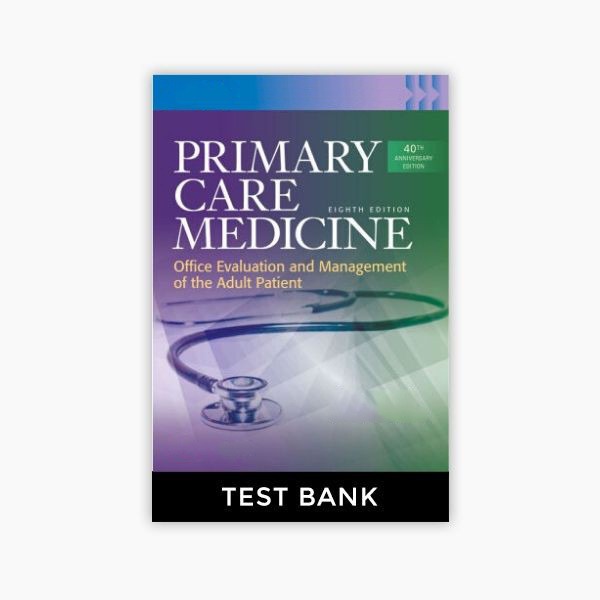
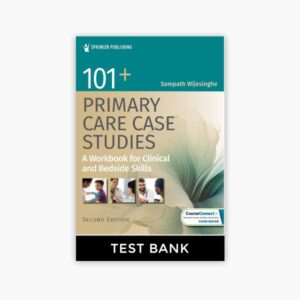

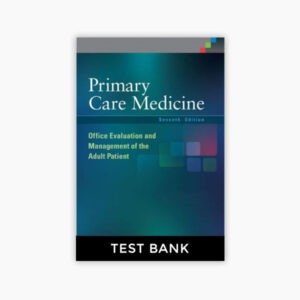


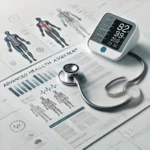
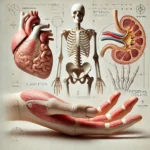







Reviews
There are no reviews yet.